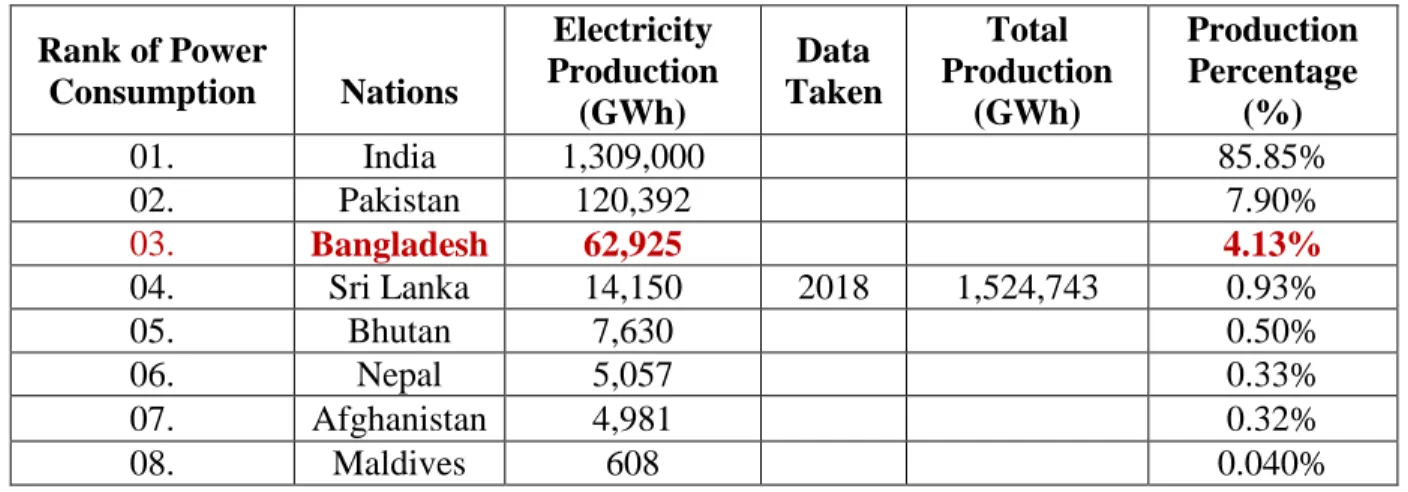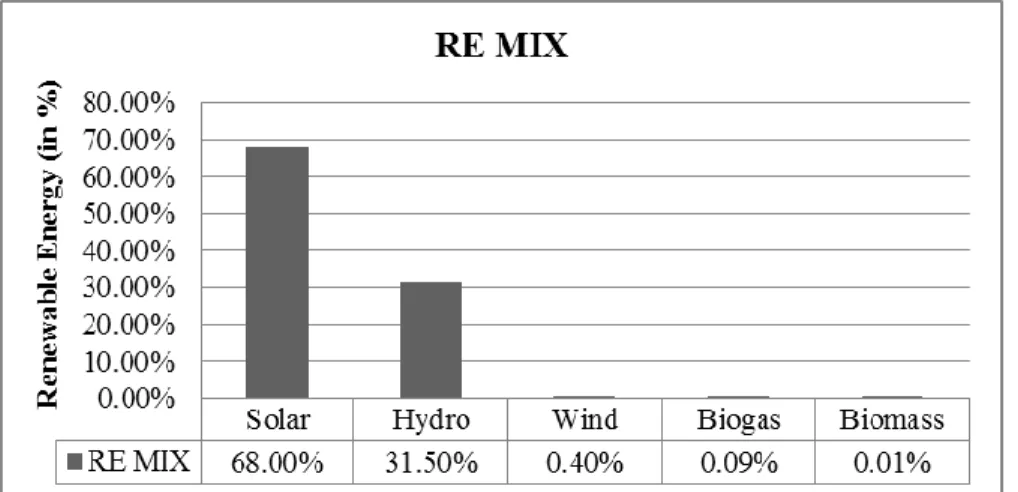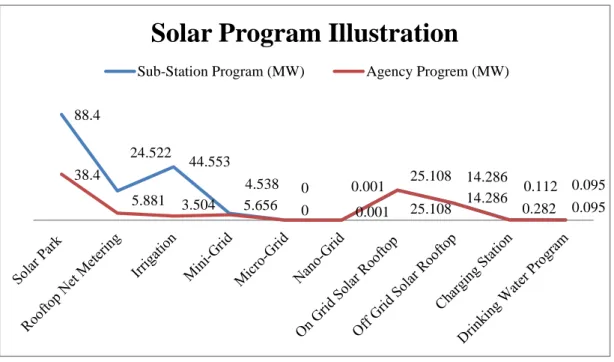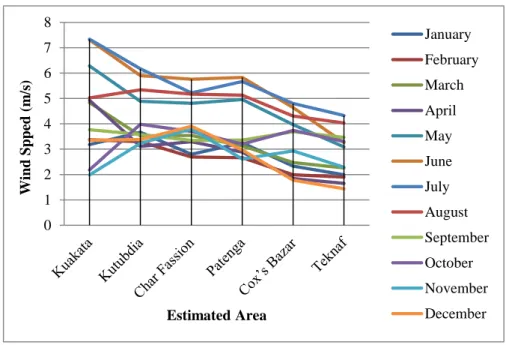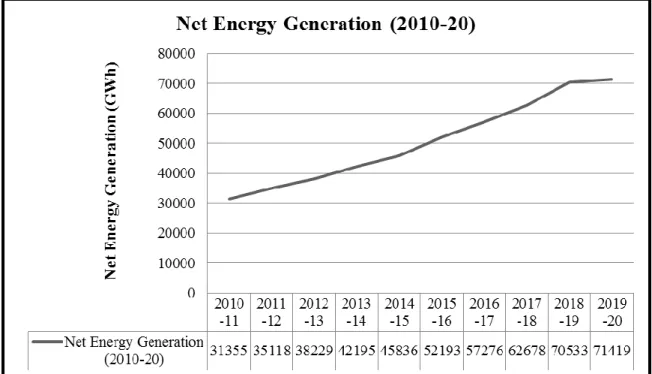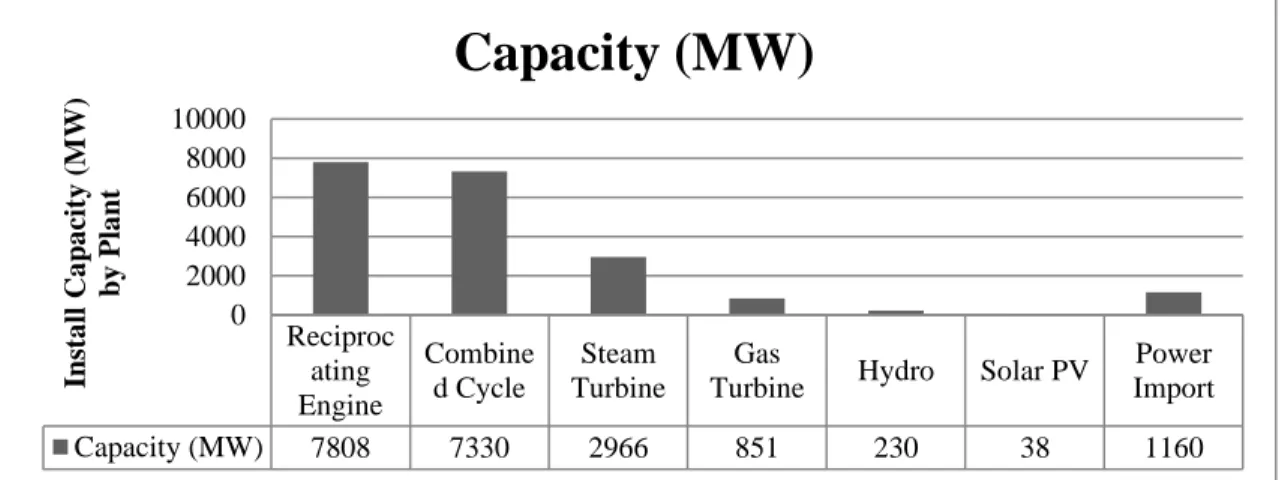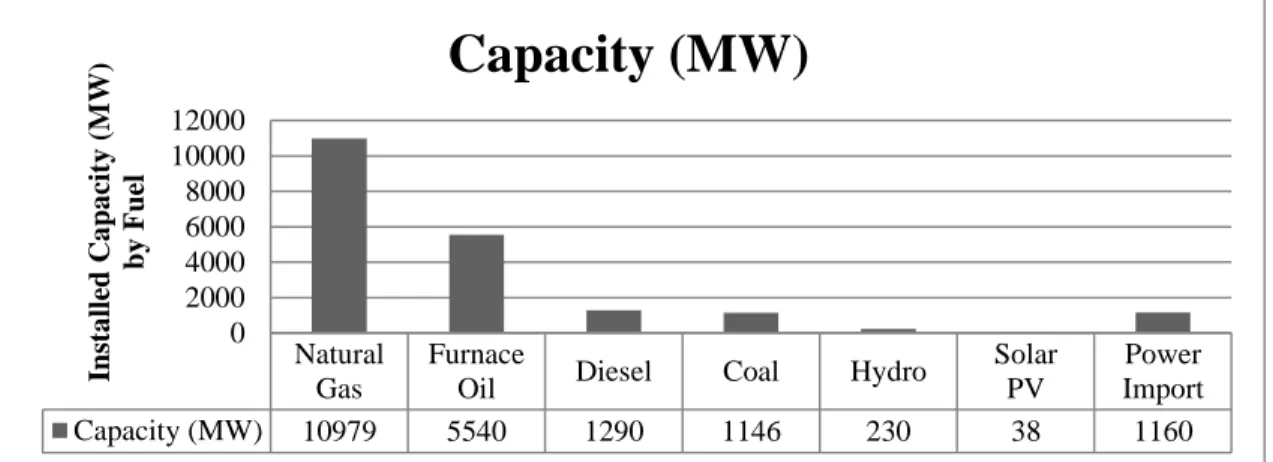This is to certify that this thesis titled “Study the Prospect Of Smart Grid Technology In Bangladesh” is being done by the following students under my direct supervision and this work is done by them in the laboratories of the Department of Electrical and Electronic Engineering in partial compliance with the requirements for the degree of Bachelor of Science in Electrical and Electronic Engineering. This thesis is submitted in partial fulfillment of the requirement for the degree B.Sc.
LIST OF TABLES
List of Abbreviations
ABSTRACT
INTRODUCTION
1.1 : Introduction
1.2 : Thesis Objectives
To merge renewable energy system with micro-grid or hybrid-grid technology replacing one-way conventional grid system. To analyze and calculate generation, transmission and distribution side framework for smart grid technology system.
1.3 : Literature
1.3.1 : Limited Conventional Fuel
1.3.2 : Threat of Climate Change
1.3.3 : Nuclear Peril
From past violations and for a safe future, there is also a threat to the environment. Then the price of raw materials of the nuclear power plant is so expensive and expensive and the handling of nuclear power plant waste is also risky, where renewable energy is not destructive and is a safe technology.
1.3.4 : Efficiency Incrimination
Many of the nuclear dangers have materialized; such as the Japanese nuclear accident in Fukushima in 2011 and a notable incident also occurred at the “Chernobyl nuclear power plant” in Russia.
1.4 : Energy Review of Bangladesh
Daffodil International University Page 5 Producers) contracted capacity) of this new capacity expansion with remaining 118 MW installed by EGCB (Bangladesh Electricity Generating Company) and BCPCL (Bangladesh-China Power Company (Pvt.) .Limited) installed 622 MW of this new capacity expansion, bringing the total generating capacity to 20,383 MW and the annual generating capacity up 7.0%.
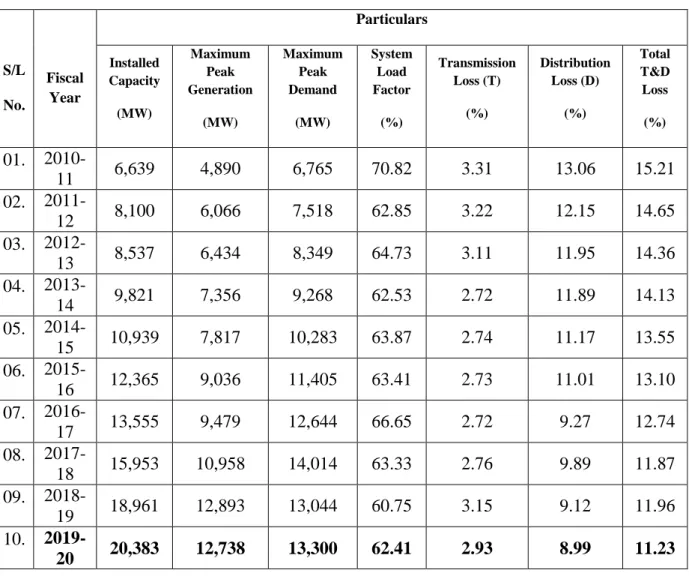
1.4.1 : Position of Bangladesh in Global Energy Sector
1.4.2 : Policy of International Organization for Climate Change
The role of infrastructure support, automation and communications for the growth of smart grid sustainability is also explained. The focus was also on the current and potential challenges for deploying smart grid infrastructure for future requirements.
ENERGY RESOURCES OF BANGLADESH
2.1 : Electrical Energy
2.2 : Types of Energy Resources
Daffodil International University Page 11 Renewable energy supplies are types of natural energy for our world.
2.2.1 : Conventional or Non-renewable Energy
2.2.2 : Non-conventional or Renewable Energy
2.3 : Conventional or non-renewable Energy Sources
Daffodil International University Page 12 On human timescales, local concentrations of near-surface metal ores that can be mined commercially by humans are non-renewable.
2.3.1 : Fossil Fuels
2.3.2 : Nuclear Fuel
Affodil International University Page 13 Currently, Bangladesh is working on nuclear power plant named "Rooppur Nuclear Power Plant", which may be commissioned in 2024 with the installed capacity of 2160MW (nameplate) [7].
2.4 : Renewable Energy Availability
One of the main focuses of this policy is to increase the contributions of renewable energy in electricity production. Daffodil International University Page 15 This is the main source and connected to the renewable energy grid of Bangladesh.
2.5 : Solar Energy
2.5.1 : Installed Capacity of Modern Solar PV System
Solar Program Illustration
2.5.2 : Solar PV Targets from 2021 to 2041
2.6 : Wind Power Station
2.6.1 : Typical Capacity of Installation
Power from the center was also distributed experimentally to 600 customers on 14 April 2007; where there were 50 mills. Each has a capacity of 20 kilowatts In other words; the power generation capacity of this center is 1 MW [12].
2.6.2 : Wind Energy Potential in Bangladesh
Daffodil International University Page 19 From this graph, the wind speed increases by more than 7 meters per second in the months of June, July and August, but in other seasons the wind speed drops below 3 m/s.
2.7 : Hydroelectric Power Plant
2.7.1 : Typical Installed Capacity of Hydroelectric Power Plant
2.7.2 : Hydro Power Potential in Bangladesh
2.8 : Further Available Major Non-Conventional Energy
2.8.1 : Biofuel
2.8.2 : Geothermal Energy
2.8.3 : Tidal Energy
In coastal areas such as Khulna, Satkhira, Barishal, Bagerhat or Cox's Bazar with estuaries and slopes, the flow of the lower head tide can be determined. If water is trapped in a coastal reservoir where there is a dead change while the turbine is powered by low tide, it can settle quickly.
2.8.4 : Waste Energy
By applying two technologies: low head tidal movement (2 - 5 meters) and medium head tidal movement (5,000 feet or more), Bangladesh with an ocean in the south can obtain more energy from the tidal waves.
TRADITIONAL GRID ANALYSIS AND REFORMES
3.1 : Hierarchy & Blue Print of a General Power Grid System
3.1.1 : Working Procedure of a general Power Grid System
Energy is produced in power plants, which are regularly located far from populated areas. Thermal, nuclear, hydro, solar and wind power plants are examples of different types of power plants.
3.2 : Power Generation Scenario of Bangladesh
Daffodil International University Page 26 India in October 2013, with an additional 100 megawatts added in March 2016 and 560 megawatts added in December 2018, accounting for 5.69 percent of total power generation.
3.2.1 : Energy Generation
3.2.2 : Current Installed Capacity
Capacity (MW)
3.2.3 : Opportunities of extension of Power Plant
According to energy specialists, the total expected renewable energy capacity in Bangladesh is up to 3,700 MW. If all projects go according to their plans, there will be a significant contribution to electricity generation from the expansion of renewable energy.
3.2.4 : Power Import
3.3 : Power Transmission Scenario of Bangladesh
To transfer the additional power and excess power that will be generated tomorrow, PGCB has adopted a sustainable development strategy. High-voltage transmission will increase further in the coming years to keep up with the growth of the country's total generation capacity and the growing regional demand for electricity [25].
3.3.1 : Power Transmission Scenario
3.3.2 : PGCB’s Transmission Scenario
3.4 : Power Distribution Scenario of Bangladesh
3.4.1 : Current Power Distribution
3.4.2 : Power Distribution by Companies
SMART GRID TECHNOLOGY
4.1 : Preface of Smart Grid System
High power electronics is another primary technique for ultimately building smart grid infrastructure by connecting modern DC grids, AC VAR sources and backbone networks to current T&D level grids [34]. Against these inevitable advantages, smart grid infrastructure has emerging technological and non-technical challenges.
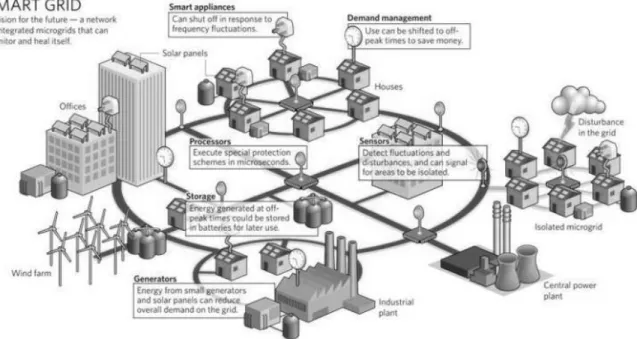
4.2 : Global Outline for Smart Grid Technology
4.3 : General Infrastructure of Smart Grid Technology
4.3.1 : Transmission system for Smart Grid
It has provided a unique view of the future smart transmission networks by defining key smart features and efficiency characteristics to address the issues using state-of-the-art technological developments in sensing, connectivity, power, computing power and information technology. . In this unique vision of a smart transmission system, it seeks to promote technical progress to achieve cheap, efficient, scalable and sustainable electricity distribution.
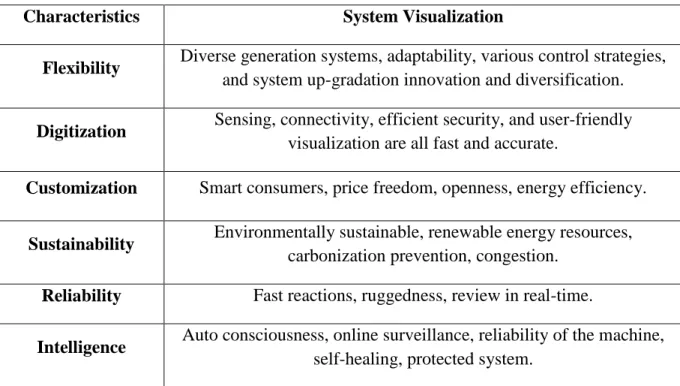
4.3.2 : Information and Communication Technology (ICT)
Daffodil International University Page 41 and electrical equipment for smart meters, and smart meters for service data center. Wireless systems, on the other hand, help minimize installation costs by emphasizing latency and security constraints.
4.3.3 : Smart Metering Technology
The introduction and implementation of the Smart Metering Scheme is absolutely essential for a crucial technical product called the In-Home Display (IHD). Daffodil International University Page 43 Due to the wide variety of benefits and applications, intelligent metering solutions are widely developed and deployed worldwide.
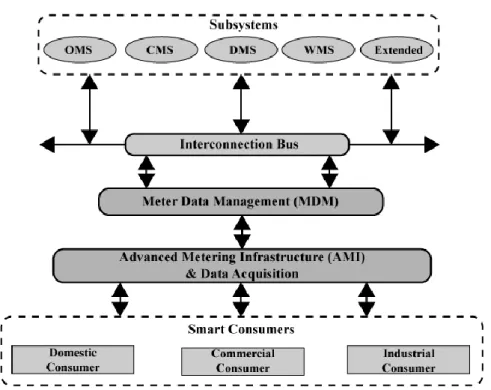
4.3.4 : Smart Control and Monitoring System
Provides fault tolerance by protecting against transients caused by disruptions and errors in smart grids. Enables dynamic planning and scheduling, as well as the design of stable, adaptive and optimal controllers in a competitive, unpredictable and variable smart grid environment.
4.4 : Comparison between Existing & Smart Grid
- Infrastructure
- Generation
- Distribution
- Control by Sensor
- Tracking
- Restoration Service
- Equipment
- Control
- Consumer Choice
Although electricity is always supplied from a primary plant, in a smart grid environment, power from a secondary supplier can be sent straight up the lines to the main plant. When an infrastructure problem occurs, the smart grid will automatically alert technicians at the test center so they can make repairs.
4.5 : Key Advantages of Smart Grid
4.5.1 : Self-Healing
4.5.2 : Real Time Data Acquisition
4.5.3 : Wide Area Monitoring and Control (WAMC)
Daffodil International University Page 48 for example by grouping or domaining collections of sensors and actuators into a hierarchical topology. Daffodil International University Page 49 Layer 3 is also an application layer that displays real-time PMU-based application functions that process time-synchronized measurements made by the preceding layer.
4.5.4 : Power System Islanding
A pre-planned distribution must be received and the system disconnected during an outage at pre-determined distribution locations. The synchronicity of generators on each island must be integrated and the asynchronous generator groups must be isolated from individual islands.
4.6 : Worldwide Supervision of Smart Grid and Further Advantages
Many organizations and structural supports are clearly involved in the design and development of simplistic and irresponsible dynamic reaction control algorithms for smart grid operation. The implementation of the Smart Grid technology platform for power grids across the country becomes a concern compared to countries such as the US and the European Union.
IMPLEMENTATION OF SMART GRID TECHNOLOGY IN
BANGLADESH
5.1 : Vision of Smart Grid Technology
A concrete solution to the Bangladeshi smart grid with the current technical development and broad characteristics as seen in Figure 5.2 will be visualized accordingly.
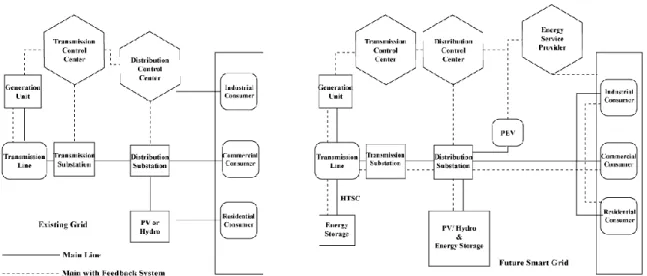
5.2 : Advantages of Smart Grid toward Renewable Energy
Daffodil International University Page 55 in Figure 5.3 provides a brief overview of requests for smart grid infrastructure for renewable energy sources in the energy system innovation network. Such new technology will play an important role in the economic boldness of the healthy living standard.
5.3 : Smart Grid Integration with Rural Electrification
Large-scale deployment of clean energy must be guided by determined government policies and standards. Daffodil International University Page 56 footprint technology, clean energy options, smart meters and resource efficient infrastructure projects and programs.
5.4 : Micro-grid & Hybrid System Integration
The guidance established a business model for the implementation of the mini-grid project by the private sector. IDCOL's Solar Mini Grid project is financially supported by the World Bank, KfW (KfW Bankengruppe Development Bank), GPOBA (Global Partnership for Output-Based Aid), JICA (Japan International Cooperation Agency), USAID (United States Agency for International Development) , ADB (Asian Development Bank), and DFID (Department for International Development)[54].

5.5 : Drawback Observation of Smart Grid Implementation
PV-based solar mini-grids are being deployed in rural parts of the country where grid expansion is unlikely in the near future. BPDB, on the other hand, has built the largest solar mini grid project in South Asia at Shalla, Sunamganj.
5.6 : Technical Challenges Faced to Implement SGT in Bangladesh
Power system and architecture engineers are qualified to consider and investigate system variables and reconfigure power grids more intelligently [56]. As a cornerstone in the possible configuration of electricity networks, it was expected that the problems of the electricity market would be seen as a solid and feasible alternative.
5.6.1 : Grid Infrastructure Inadequacies
Renewable Energy Integration
Daffodil International University Page 60 compare between baseline performance and intelligent grid efficiency, collection of correct data at appropriate frequency and position, assessment of social benefits and revenue generation, using the required methods of inference and prediction, etc. Daffodil International University Page 61 power electronic devices, and other technological and commercial difficulties face renewable energy sources such as small hydropower, solar, wind, biomass and tidal energy based generation.
5.6.3 : Energy Storage System
The government and power companies have updated integrated grid connectivity codes to address some of the issues for efficient and scalable deployment and integration of renewable energy into the traditional grid.
5.6.4 : Data Measurement System Drawbacks
5.6.5 : Automation, Protection and Control Scheme
5.6.6 : Participation of the Customers
5.6.7 : Intelligent Electronic Equipment’s (IEDs)
5.6.8 : Information and Communication Technology
5.6.9 : Cyber Security Distraction
5.6.10 : Quality of Power
As power electronics-based circuits become an increasingly important feature of smart grids, power quality needs to be assessed. The main issues are the technological problems of energy efficiency, such as the study of the discharge of new devices connected to the smart grid and their allocation, the calculation of power quality indices, help with reduced voltage and the wide issue of voltage drop, weak transmission systems, lack of market knowledge and high costs mitigation methods.
5.6.11 : Reliability
5.6.12 : Energy Market Mechanism
5.6.13 : Power System Stability
5.6.14 : Demand Side management (DMS)
5.7 : Introduction to Micro-grid and Hybrid-grid System
Compared to single-source systems, hybrid energy systems incorporate two or more sources of energy production, storage, or end-use technology, and they can have a host of benefits. Biomass + Wind Solar PV + Solar PV Hydro + Solar PV Biodiesel + Wind Gas + Solar Coal PV + Solar PV.
5.8 : Framework of Microgrid Agent Control System (MGAS)
From these three main sets of conduct, a large number of agent forms are subordinated and used [61]. Both subcast agents inherit three main behaviors and support traditional decision and accessibility frameworks.
5.9 : Framework of Hybrid Grid System
Communication agents are also used to promote standards-based agent interaction [60]. Figure 5.7 below provides an understanding of the hybrid power network with multiple alternating distributed energy generation (AEDG) that separates centralized and decentralized DC and AC buses.
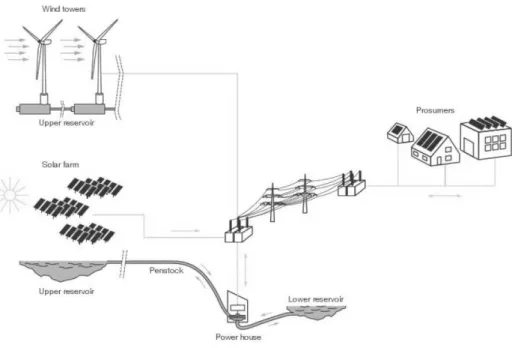
5.10 : Energy Storage System
The integration of sophisticated power electronics and the grid, known as an energy storage facility, plays a key role in both technological and financial benefits. Non-variable frequency response Achieve Increase income from distribution generation Reduction of transient errors Reduction of Supplementary Services income increase Network stability Increase Transmission access income increase.
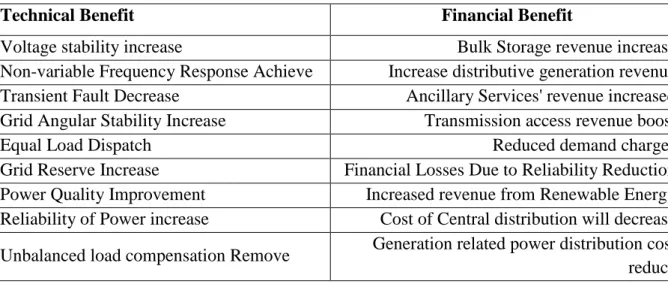
COST AND CURRENT STATISTICS ANALYSIS
Cost Analysis of typical Smart Grid Equipment
By integrating smart grid technology in the transmission and distribution sector, 4.78% additional expenses have been incurred.
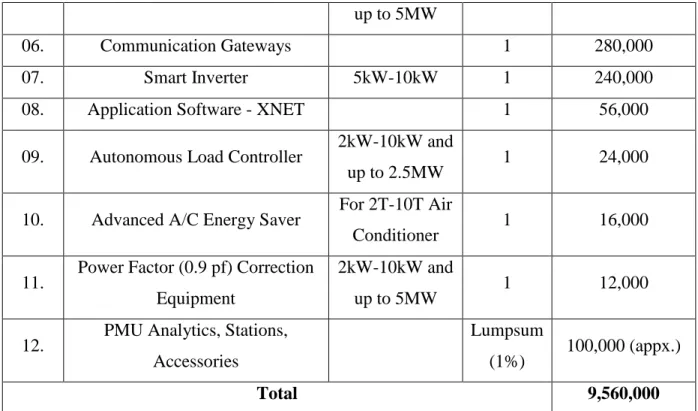
6.2 : Benefit Analysis After Installing Smart Grid Technology on Distribution Side
Net Savings Calculation
But if more power plants are integrated with smart grid technology, a more efficient system will be achieved.
CONCLUSION AND RECOMMENDATIONS
7.1 : Conclusion
7.2 : Recommendations for Future Work
Yang "Smart Grid - A New and Improved Power Grid: A Survey" IEEE Communications Surveys & Tutorials, Vol. Dharma "Technical Challenges for Smart Grid Development in India" 2012 International Conference on Advances in Engineering, Science and Management (ICAESM), p.
